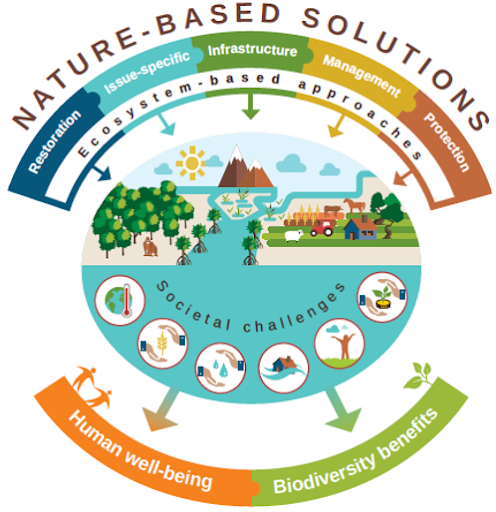
Climate Change and Tourism: How Destinations Are Responding to the Climate Crisis (Part 1)
Climate change is slowly becoming the subject of dinner table conversations in tourism destinations around the world – both for those who live in these destinations, and for those who visit them. Rising global temperatures and increasingly erratic weather patterns are making tourism offerings, especially those that involve the outdoors, highly unpredictable. From increased coral bleaching events in island nations to reduced snow in ski resorts, the tourism industry – and the livelihoods it supports – faces grave threats from the impact of climate change. On the other hand, tourism itself accounted for 8% of global carbon emissions in 2013, confirming that the industry contributes significantly to anthropogenic climate change, primarily through transport, shopping and food. In a climate-ravaged world that is economically-dependent on tourism, building resilient destinations is imperative.
Solimar Internationa’s recent white paper publication, “Climate Action through Regeneration: Unlocking the Power of Communities and Nature through Tourism”, showcased how tourism businesses are responding to the climate and biodiversity crises by regenerating destinations through investments in nature, catalyzing local solutions for both climate change mitigation and adaptation. After working in over 300 destinations globally to support sustainable development through tourism, we have witnessed the power that the tourism industry has to respond to climate change and help their communities adapt to its inevitable consequences. Read on to learn more about what destinations are doing to respond to the climate crisis.

What is the difference between climate change adaptation and mitigation? Can tourism respond to both?
Sustainable tourism should approach climate change from two perspectives: mitigation and adaptation. Put another way, this means responding to both the causes and the consequences of climate change. Mitigation includes initiatives that prevent and reduce carbon dioxide emissions, which are a major contributor to climate change. Generally, tourism businesses approach mitigation by reducing energy use or increasing energy efficiency. They may also purchase carbon offsets (which essentially pay another company to remove carbon to compensate for their own emissions) or use renewable energy sources. Solimar International’s current USAID Climate Adaptation Project in the Maldives is assisting businesses identify innovative investment opportunities for responding to climate change–from enhancing resilience of energy and water sources to regenerating hyper-resilient coral reefs.
The tourism industry continues to contribute significantly to greenhouse gas emissions. Particularly in far away destinations like the Maldives, air travel is a significant contributor to carbon emissions in the tourism industry. Due to the difficult nature of removing carbon emissions, achieving Net Zero is an extremely difficult task. However, in the Maldives, businesses like Soneva Resorts employ a particularly successful mitigation strategy that focuses on both direct and indirect carbon emissions. Direct emissions, such as energy usage and indirect emissions, including guest air travel, are reduced using rigorously vetted carbon offset programs.

Despite mitigation attempts, the effects of climate change will require adaptation measures for the tourism industry, especially in SIDS (Small Island Developing States). These measures include actions which anticipate and respond to the consequences of climate change. Adaptation measures can include: limiting non-climate related stressors on fragile ecosystems through management plans, construction of hard engineering solutions such as sea walls to protect coastal infrastructure, and regeneration or conservation of degraded ecosystems. The Maldives again provides a great example, possessing a large amount of fragile mangrove forests and seagrass meadow ecosystems that provide a variety of benefits including shoreline protection, preventing coastal erosion, and are, of course, a valuable attraction for tourism businesses.
Instituting management plans and encouraging tourism businesses to protect these ecosystems can also be part of an adaptation strategy. Tourism enterprises in SIDS have used coral reef management and restoration to adapt to climate change, because coral is an incredibly valuable tourist attraction–and crucial for coastal defense. There have been a variety of projects and companies working on innovative coral restoration approaches, including a company called Reefscapers that partners with resorts to implement management and restoration plans. In Grand Bahama, Coral Vita, applies assisted evolution to grow corals with improved resilience to higher water temperatures and acidity. Despite adaptation measures, tourism in SIDS faces an existential crisis related to sea level rise.
The importance of Nature-based Solutions in responding to climate change
As highlighted in Solimar’s recent white paper, tourism businesses cannot respond to the climate and biodiversity crisis without protecting and restoring nature. Nature-based Solutions (NbS) are defined as actions that protect, sustainably manage, and restore nature while simultaneously addressing societal challenges— such as unemployment, hunger, drought, poverty, or affordable housing. The concept of NbS is rooted in climate change mitigation and adaptation and has grown in recognition over the past decade, embraced as an essential framework by the International Union for the Conservation of Nature (IUCN), which created the IUCN Global Standard for Nature-based Solutions to guide practical implementation.

NbS play a vital role in both greenhouse gas emissions reduction and climate change adaptation. Recent research suggests that by 2030, NbS could contribute 30-37% of the cost-effective mitigation required to limit warming to below 2°C. Global investments in NbS surpassed US $133 billion in 2020–and the United Nations Environment Program predicts that this number must triple over the next two decades. Ideally, NbS are used to protect, manage, and restore ecosystems that already exist and, if well-designed and implemented, can deliver multiple synergistic climate benefits. Although 66% of country signatories to the Paris Climate Agreement mention NbS as part of their strategy, just seventeen have recognized the combined mitigation and adaptative power of NbS. We are just beginning to realize how focused management of NbS could result in powerful multiplier effects related to climate resilience.
| Examples of Nature-based Solutions | ||
| Solutions that Protect Ecosystems | Solutions that Manage Ecosystems | Solutions that Restore Ecosystems |
| Avoided Forest Conversion | Natural Forest Management | Reforestation |
| Avoided Peatland Impacts | Agroforestry | Coastal Wetland Restoration |
| Avoided Degradation of Coastal Wetlands | Regenerative Agriculture | Peatland Restoration |
COP26 outcomes and their relevance to tourism
COP26 outcomes will impact the tourism industry, especially in relation to climate change. At COP26, there was a push to remain on track for 1.5 C of global warming. All countries were requested to update their NDCs (nationally determined contributions), or plans for emission reduction, in order to stay on track to meet this goal. Mitigation actions such as these are vital to the prevention of catastrophic effects of climate change and sea level rise that affect tourism infrastructure.
COP26 also opened the door for blue carbon projects. Blue carbon is carbon that is stored in marine ecosystems such as mangroves and seagrass beds. These ecosystems are being lost at unprecedented rates globally, so conserving and restoring them prevents and offsets carbon emissions while providing important adaptation services. These ecosystems provide services and attractions that are valuable resources for the tourism industry. They act as a nursery for reef fish, maintain water quality, contribute to shoreline stability, buffer ocean acidification, and protect coastal infrastructure from storms and floods. Businesses like Iberostar, through their Wave of Change Campaign, have committed to protecting and restoring these ecosystems in the destinations where they operate, enabling guests to even offset their emissions through local restoration projects.
Blue carbon initiatives provide an opportunity for conservation, mitigation and tourism to work together. Blue carbon conservation and restoration strategies offer tourism businesses the opportunity to preserve and replenish natural resources that attract tourists. In the Maldives, a campaign pioneered by Six Senses Laamu is working to protect seagrass meadows in the Maldives and increase commitments from other resorts to protect and restore their seagrass ecosystems. Mangrove tourism is also on the rise globally; increased visitation to mangrove forests can help demonstrate their importance to local communities and industries, ensuring their long-term preservation.
COP26 also saw an increase in finance for climate adaptation. Countries recommitted to a pledge of $100 billion per year for mitigation and adaptation costs. Most funding was previously for mitigation, but now $40 billion of it will be used to support adaptation costs – especially in island nations, developing countries, and countries whose economies benefit greatly from tourism. This is an enormous opportunity for increasing critical investment in Nature-based Solutions in tourism destinations.
Glasgow Declaration on Climate Action in Tourism
COP26 also introduced the Glasgow Declaration on Climate Action in Tourism, a one page document that has over 300 signatories from the tourism industry including businesses, countries, tourism stakeholders, and destinations. Signatories acknowledged the role of the tourism sector in increasing carbon emissions and agreed to develop plans to halve their carbon dioxide emissions by 2030 and to transition to net zero by 2050.
COP26 includes five pathways to promote climate action. Currently, work is focused on measuring and decarbonizing. A working group in November will focus on regeneration, which offers opportunities for the involvement of regenerative tourism practices. A future that remains safe from the harmful effects of climate change depends on the introduction of innovative practices like blue carbon and regenerative tourism programs. COP26’s negotiations offer hope that the world’s leaders are committed to solving the world’s environmental problems together to make the planet a greener place, one step at a time.
Check out Part 2 in this blog series, which highlights specific approaches that destinations and businesses are taking to mitigate climate change and adapt to a changing world. If you are a business driving innovation in this sector, be sure to take our survey here for a chance to be a featured business in an upcoming white paper publication: https://tinyurl.com/enterprise-nbs-survey

Blog by Shivya Nath, Alexandria Kleinschmidt, Chloe King, and Annie Combs
Tags: #regenerativetourism, climate change, sustainable tourism, tourism
